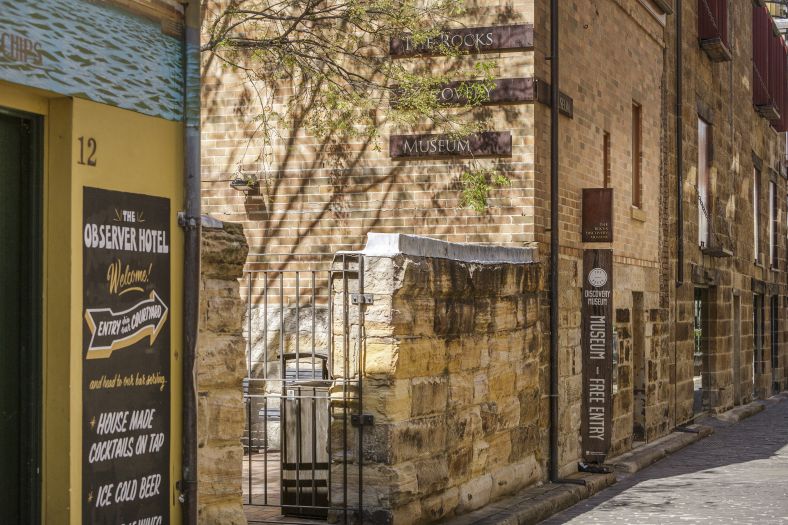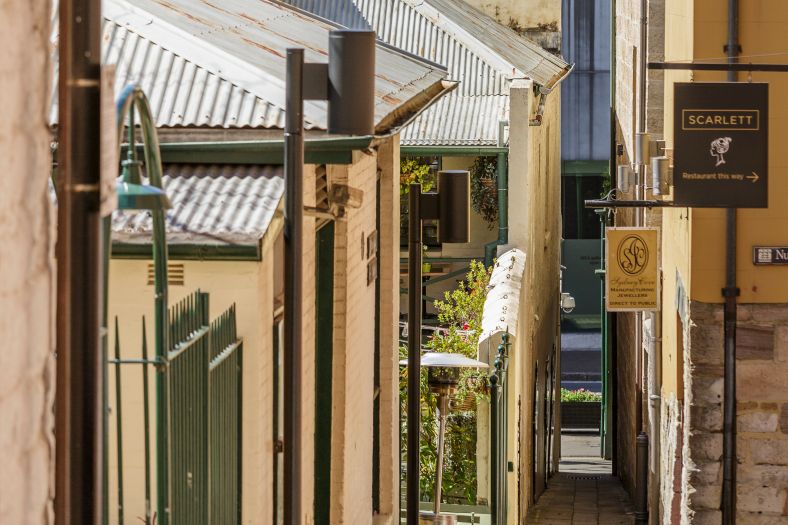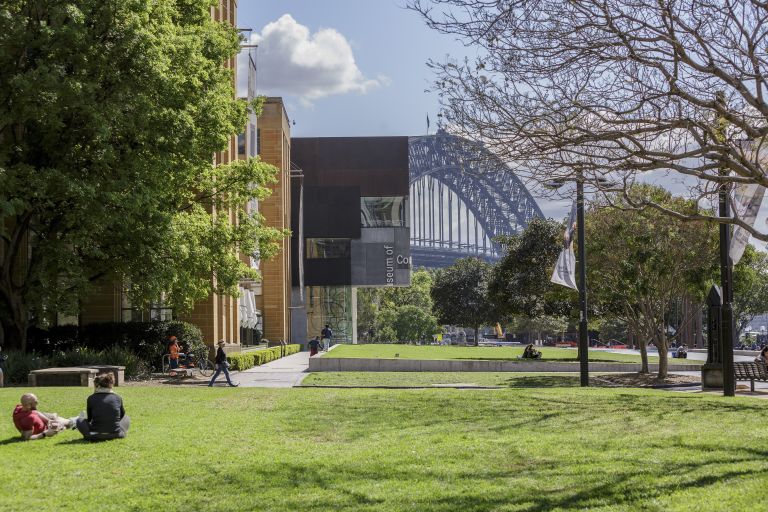Gadigal Country
The Rocks is a place of discovery. It showcases the ancient and post-colonial history of both Sydney and Australia.
The Rocks sit on the land of the Gadigal people. For thousands of generations, the Gadigal people used Warrane – the Gadigal name for Sydney Cove – for fishing, hunting, gathering and cultural ceremonies. They lived in places known as Tallawalodah (the area from the shoreline to Harrington Street) and Tar-ra (Dawes Point).
The south shore of the harbour, from Woolloomooloo to Pyrmont, was a place to meet, celebrate, conduct ceremonies, settle disputes and gather food.

Credit: Bronnie Barnett
Archaeological excavations in Cumberland Street found evidence of a campfire dating some 400 years before the First Fleet, where people enjoyed a meal of snapper and bream from the harbour and oysters and other shellfish from Darling Harbour.
You can now immerse yourself in Aboriginal history and culture by walking the Yananurala journey along the foreshore.
What you will also see today is evidence of The Rocks as the first permanent European settlement in Australia. The patchwork of streets and lanes, reveals hidden gems and stories of the people who lived and worked alongside Sydney Cove.
Credit: Place Management NSW – The Rocks
The Rocks was once a place where grand homes towered above narrow, winding streets. It was a rough and wild place until the outbreak of smallpox in the 1880s, and the Bubonic plague in 1900 saw the area declared as ‘slums’.
You might want to visit the narrow, stone-paved laneway known as Suez Canal, which runs between George and Harrington Streets. Once a shifty place of opium dens and sly grog shops, today, it is a place where you can seek out artisan shops and galleries.
Suez Canal connects to Nurses Walk, named in 1977 for the nurses who worked at the colony’s first hospital in this location, and Greenway Lane, named for Francis Greenway, the civil architect who lived in this area and designed Hyde Park Barracks, St James’ Church and the Court building in King Street.

Credit: Bronnie Barnett
Cross Argyle Street to Kendall Lane, named for the steam flour mill and biscuit factory of Lawrence Kendall, which operated there from the 1860s, and visit The Rocks Discovery Museum. Here, alongside archaeological artefacts, you can learn more about Aboriginal history and stories of the area and the impact of European settlement.
Follow a hidden route through the back streets and find secret courtyards and stairways to new places. Stop and read about the history of key buildings and let your imagination take you back in time to experience the area’s past before exploring all that this great public space has to offer, from markets, to live music and even free yoga in the park.

Credit: Place Management NSW – The Rocks
